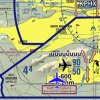ksp_530
Pre-Flight
Had the same issue. But I pulled the connector out with a pair of pliers. Hopefully, I didn't cause any disconnection.
Is it just me but how the hell is the metal antenna meant to screw on to this !!!




